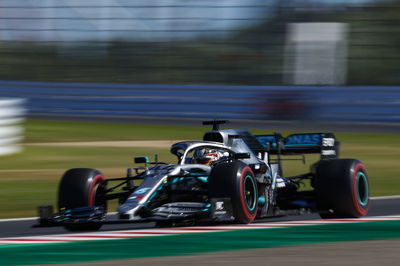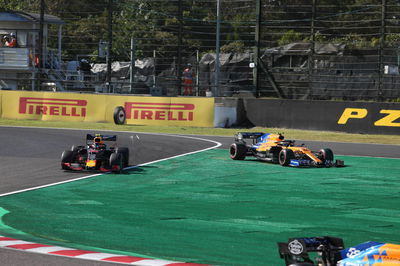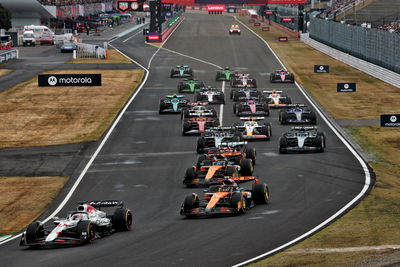Mercedes: Two-stopping Hamilton was “50-50 call”
Mercedes’ decision to two-stop Formula 1 championship leader Lewis Hamilton during the Japanese Grand Prix was a “50-50 call”, according to team boss Toto Wolff.
Hamilton ran third for much of Sunday’s race but looked like he could be well placed to challenge for victory had he completed a one-stop strategy, with long-time leader Valtteri Bottas and Ferrari’s Sebastian Vettel both two-stopping.

Mercedes’ decision to two-stop Formula 1 championship leader Lewis Hamilton during the Japanese Grand Prix was a “50-50 call”, according to team boss Toto Wolff.
Hamilton ran third for much of Sunday’s race but looked like he could be well placed to challenge for victory had he completed a one-stop strategy, with long-time leader Valtteri Bottas and Ferrari’s Sebastian Vettel both two-stopping.
But Mercedes opted to two-stop both of its drivers due to concerns over tyre degradation, meaning that Hamilton conceded track position to his teammate and Vettel after making his second stop later on. Despite a late attack on Vettel while running on fresher Soft tyres, Hamilton was left to settle for third behind the German and race-winner Bottas.
Wolff explained the call to move Hamilton onto the same strategy as Bottas was one of “lots of tricky calls” during the race, revealing the team did consider keeping Hamilton out and asking its drivers to swap positions on-track.
“Lewis in third was always between a rock and a hard place,” Wolff said.
“When you’re in the lead, you need to protect your position. When you’re third, you can take more risks and more chances.
“What we did is protect the lead with Valtteri and took the pace out of his race, once Sebastian pitted for his second stop.
“It was always clear it would go towards Valtteri, we’re not playing teammates against each other with race strategy. But then we can say we could have assured second place.
“Pitting Lewis at the end was a 50-50 call,” he added.
“We could have left him out and tried to ask the drivers to change position to give the result back and maybe protect it against Sebastian.
“But on the other side maybe not protecting against Sebastian, so pitting and giving him a new set of tyres was the decision that was being taken, at that stage, it felt like the right decision.”
Asked if Hamilton could have gone to the end if he had managed his tyres more earlier in the first stint, Wolff replied: “No.
“Both tyres dropped suddenly, you could see they were pretty robust and then from one lap to the other the drivers felt there was no grip anymore, and both of the drivers said it.
“When we changed Lewis for the second time, his feedback was that the tyre was losing grip and at that stage, it was difficult to defend against Sebastian.
“It was never a question with Valtteri because we knew what we were going to anyway.”
Hamilton was left frustrated by his strategy and was heard questioning the decision to two-stop over team radio on numerous occasions throughout the race. Wolff insisted Hamilton’s irate radio messages were not difficult to manage.
“We completely acknowledge that a driver is eager to win and wants to maximise every opportunity,” he said.
“If you don’t it’s simply annoying, and I think we completely understand each other’s position.
“Also, for us and Lewis knows that very well and has total understanding for us in the garage. It’s very difficult to take the right decisions in order to ensure maximum points.
“As long as you embrace the different positions, we have always come back, discussed it and moved forward as an even stronger unit.”












